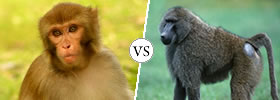Difference between Elk and Caribou
Key difference: Elk and Caribou are part of the deer family and hence are quite similar to each other. However, there are numerous differences between them as well. In most of Europe, the elk is called a ‘wapiti’, whereas caribou is known as reindeer.
 Elk and Caribou are part of the deer family and hence are quite similar to each other. However, there are numerous differences between them as well. A deer is essentially any animal in the family Cervidae.
Elk and Caribou are part of the deer family and hence are quite similar to each other. However, there are numerous differences between them as well. A deer is essentially any animal in the family Cervidae.
The elk is a large bodied deer species that is primarily found in western North America and eastern Asia. However, they had been introduced into new areas and habitats, such as Argentina, Australia, and New Zealand. In most of Europe, the elk is called a ‘wapiti’, which is from the Shawnee and Cree word waapiti, meaning "white rump". Wapiti is used in particular for the Asian subspecies. In Eurasia, the name elk tends to refer to the Alces alces species, which is essentially the moose.

Caribou is also a large bodied deer species. However, it resides mainly in Arctic and Subarctic regions, including Northern regions of North America, Europe, Asia, and Greenland. Caribou are known as reindeer in Europe.
A detailed comparison between Elk and Caribou:
|
|
Elk |
Caribou |
|
Scientific classification |
Animalia – Chordata – Mammalia – Artiodactyla – Ruminantia - Cervidae – Cervinae – Cervus |
Animalia – Chordata – Mammalia – Artiodactyla – Cervidae – Capreolinae – Rangifer |
|
Species |
Cervus canadensis |
Rangifer tarandus |
|
Subspecies |
Numerous subspecies - six from North America and four from Asia |
While overall widespread and numerous, some of its subspecies are rare and at least one has already gone extinct. Reindeer has several subspecies with variations depending on the geographical localities. However, there are two major types of reindeer depending on the ecosystem that they inhabit known as Tundra reindeer (six subspecies) and Woodland reindeer (three subspecies). |
|
Alternate Names |
Wapiti in Europe; in Eurasia elk refers to Alces alces i.e. Moose. Asian subspecies are sometimes referred to as the maral. |
Reindeer in Europe |
|
Conservation Status |
Least Concern |
Least Concern |
|
Habitat |
Forest and forest-edge |
Arctic and Subarctic regions |
|
Found in |
Primarily in western North America and eastern Asia. Have been introduced in Argentina, Australia, and New Zealand. |
Northern regions of North America, Europe, Asia, and Greenland. |
|
Diet |
Grasses, plants, leaves, and bark. During the summer, elk eat almost constantly, consuming between 4 and 7 kilograms (8.8 and 15 lb) daily. |
They mainly eat lichens in winter, especially reindeer moss. However, they also eat the leaves of willows and birches, as well as sedges and grasses. There is some evidence to suggest that on occasion, they will also feed on lemmings, arctic char, and bird eggs. |
|
Characteristics |
Populations vary as to antler shape and size, body size, coloration and mating behavior. DNA investigations of the Eurasian subspecies revealed that variation in antlers, mane and rump patch development are based on "climatic-related lifestyle factors". In North America, males are called bulls, and females are called cows. In Asia, stag and hind, respectively, are sometimes used instead. Elks have a four-chambered stomach similar to cattle. |
Reindeer vary considerably in color and size. Reindeer are thought to be the only mammals that can see ultraviolet light. Like moose, reindeer have specialized noses featuring nasal turbinate bones that dramatically increase the surface area within the nostrils. Incoming cold air is warmed by the animal's body heat before entering the lungs, and water is condensed from the expired air and captured before the deer's breath is exhaled. It is then used to moisten dry incoming air and is possibly absorbed into the blood through the mucous membranes. Reindeer have a four-chambered stomach. |
|
Fur |
Have a reddish hue to their hair coloring, as well as large, buff colored rump patches and smaller tails. During the fall, elk grow a thicker coat of hair, which helps to insulate them during the winter. By early summer, the heavy winter coat has been shed. |
The color of the fur varies considerably, both individually, and depending on season and subspecies. Northern populations, which usually are relatively small, are whiter, while southern populations, which typically are relatively large, are darker. The coat has two layers of fur: a dense woolly undercoat and longer-haired overcoat consisting of hollow, air-filled hairs. |
|
Antlers |
Only the males have antlers. A bull (male) elk's antlers may reach 4 feet (1.2 meters) above its head, so that the animal towers 9 feet (2.7 meters) tall. Bull elk lose their antlers each March, re-grow them in May. |
Both sexes grow antlers, though they are typically larger in males. However, there are a few populations in which females lack antlers completely. In the Scandinavian populations, old males' antlers fall off in December, young males' fall off in the early spring, and females' fall off in the summer. In the largest races, the antlers of big males can range up to 100 cm (39 in) in width and 135 cm (53 in) in beam length. They have the largest antlers relative to body size among living deer species. |
|
Hooves |
Possesses an even number of toes on each foot, similar to those of camels, goats and cattle. |
Reindeer hooves adapt to the season: in the summer, when the tundra is soft and wet, the footpads become sponge-like and provide extra traction. In the winter, the pads shrink and tighten, exposing the rim of the hoof, which cuts into the ice and crusted snow to keep it from slipping. This also enables them to dig down through the snow to their favorite food, a type of lichen known as reindeer moss. |
|
Average life span |
8 to 12 years in the wild, 20 years or more in captivity. |
15 years in the wild |
|
Size |
Height at the shoulder, 4 to 5 ft (1.2 to 1.5 m) |
4 to 5 ft (1.2 to 1.5 m) at the shoulder |
|
Weight |
325 to 1,100 lbs (147 to 499 kg) |
240 to 700 lbs (109 to 318 kg) |
|
Group name |
Gang |
Herd |
|
Behavior |
Adult elk usually stay in single-sex groups for most of the year. During the mating period known as the rut, mature bulls compete for the attentions of the cows and will try to defend females in their harem. Ritualized mating behaviors include posturing, antler wrestling (sparring), and bugling, a loud series of vocalizations which establishes dominance over other males and attracts females. Bulls also dig holes in the ground, in which they urinate and roll their body. The urine soaks into their hair and gives them a distinct smell which attracts cows. |
Mating occurs from late September to early November. Males battle for access to females. Two males will lock each other's antlers together and try to push each other away. The most dominant males can collect as many as 15-20 females to mate with. A male will stop eating during this time and lose much of its body reserves. |
|
Reproduction |
Female elk have a short estrus cycle of only a day or two, and matings usually involve a dozen or more attempts. Females can produce one and, very rarely, two offspring at a time. The gestation period is 240 to 262 days and the offspring weigh between 15 and 16 kilograms (33 and 35 lb). Calves are born spotted, as is common with many deer species, and they lose their spots by the end of summer. |
Reindeer are seasonal breeders. The breeding season, or rut, normally begins in early September, lasting 3 to 4 weeks. The gestation period is about 7 months (210 – 220 days). Calves may be born the following May or June. After 45 days, the calves are able to graze and forage but continue suckling until the following autumn and become independent from their mothers. |
|
Migration |
As is true for many species of deer, especially those in mountainous regions, elk migrate into areas of higher altitude in the spring, following the retreating snows, and the opposite direction in the fall. Hunting pressure also impacts migration and movements. |
Some populations of the North American caribou migrate the furthest of any terrestrial mammal, traveling up to 5,000 km (3,100 mi) a year, and covering 1,000,000 km2 (390,000 sq mi). Normally traveling about 19–55 km (12–34 mi) a day while migrating, the caribou can run at speeds of 60–80 km/h (37–50 mph). |
|
Commercial uses |
Elk are held in captivity, or farmed, for hunting, meat production and velvet collection. Elk are not generally harvested for meat production on a large scale. Antler velvet it is used in East Asian medicine. Elk hides have been used for thousands of years for tepee covering, blankets, clothing and footwear. Modern uses are more decorative, but elk skin shoes, gloves and belts are not uncommon. |
Wild reindeer hunting and herding of semi-domesticated reindeer (for meat, hides, antlers, milk and transportation) are important to several Arctic and Subarctic peoples. |
|
Cultural |
Elk have played an important role in the cultural history of a number of peoples. Pictograms and petroglyphs of elk were carved into cliffs thousands of years ago. The elk played a spiritual role in the Lakota society. |
The reindeer are well known due to the myth in which Santa Claus's sleigh is pulled by flying reindeer. |
Image Courtesy: astronomy-images.com, naturecanada.ca









Add new comment